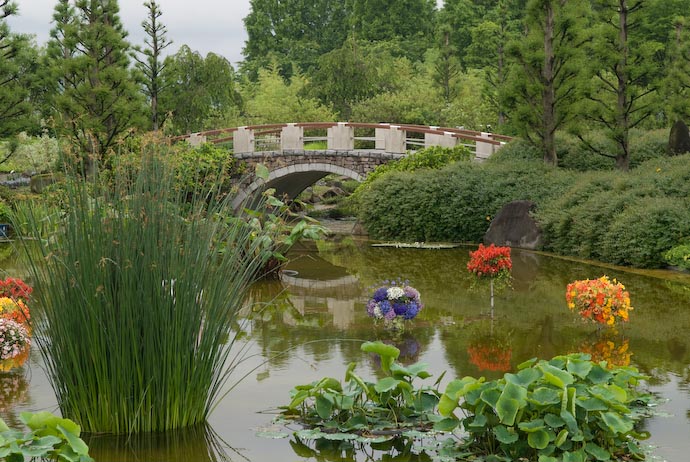
Nikon D200 + Nikkor 17-55mm f/2.8 @ 50 mm — 1/80 sec, f/5, ISO 400 — map & image data — nearby photos
Gardens at the “Water Forest”
Kusatsu, Japan
(half an hour from Kyoto)
Yesterday's picture of a water lily was taken during a dark, rainy day at the City of Kusatsu's (“Water Forest”) park. The name in Japanese is mizu no mori (水の森). They have outside gardens with all kinds of water plants, a large greenhouse (“Lotus Hall”), a movie theater, and restaurant. It costs $3 for adults.
It was raining while we where there, which is perhaps appropriate for a “water forest”.
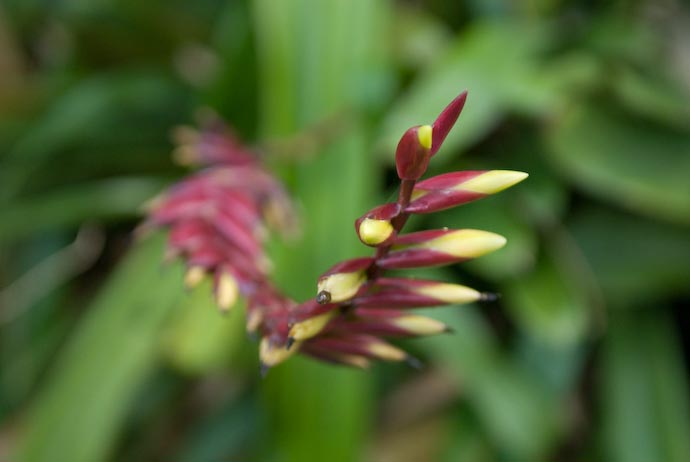
Nikon D200 + Nikkor 17-55mm f/2.8 @ 55 mm — 1/50 sec, f/2.8, ISO 640 — map & image data — nearby photos
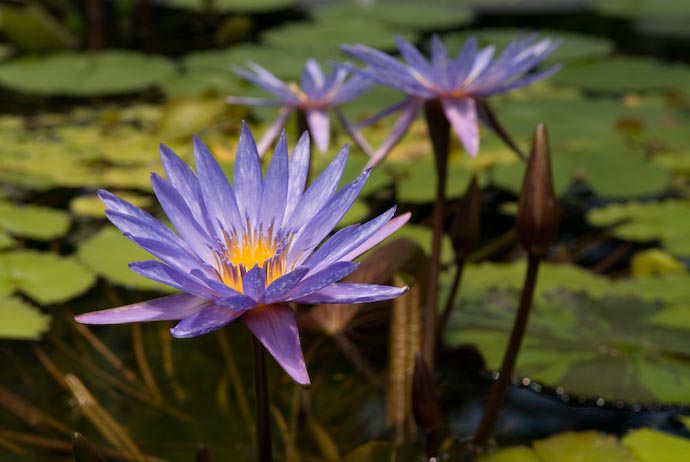
Nikon D200 + Nikkor 17-55mm f/2.8 @ 55 mm — 1/125 sec, f/6.3, ISO 400 — map & image data — nearby photos
kishin · 喜心
Even my 2,500-page Japanese-Japanese dictionary didn't have this
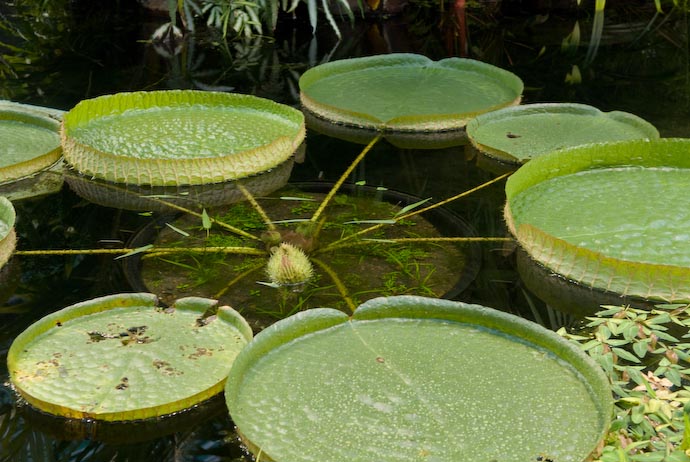
Nikon D200 + Nikkor 17-55mm f/2.8 @ 40 mm — 1/25 sec, f/5.6, ISO 400 — map & image data — nearby photos
Where dinner plates come from?
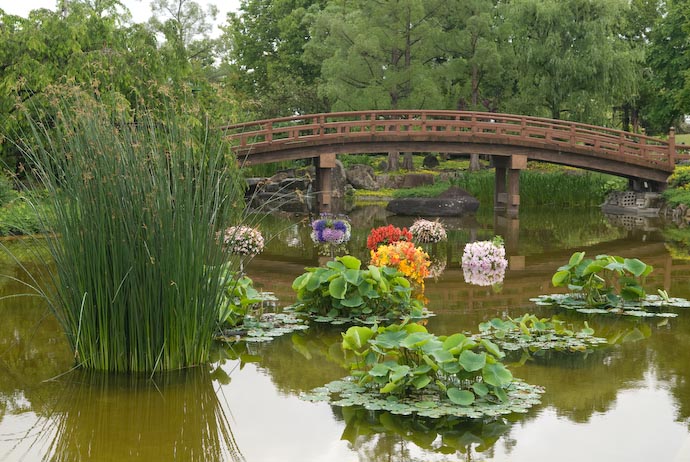
Nikon D200 + Nikkor 17-55mm f/2.8 @ 38 mm — 1/60 sec, f/5, ISO 400 — map & image data — nearby photos
Another Bridge in the Gardens
this time, a wooden one
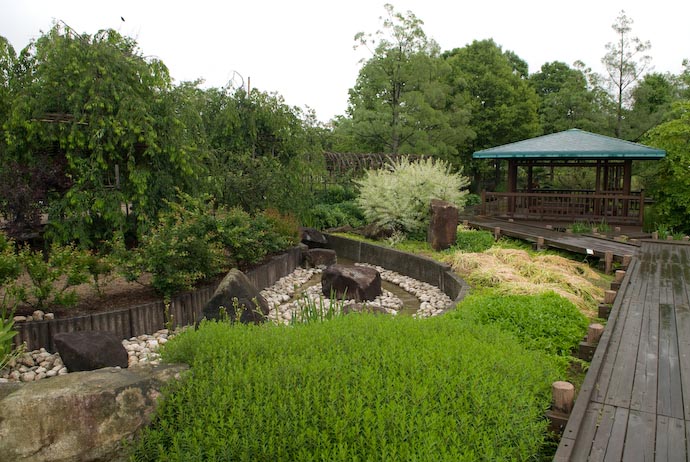
Nikon D200 + Nikkor 17-55mm f/2.8 @ 17 mm — 1/50 sec, f/6.3, ISO 400 — map & image data — nearby photos
Path Through the Gardens
One thing I'll never understand is the apparent need in Japanese culture to make allowance for the fact that a smoker might not want to go for more than three minutes without a cigarette. Smoking was not allowed in the gardens, except for pretty much every place there was a bench (the little covered area in the photo above being one of the many smoking areas). We were the only ones there at the time – a rainy day just before closing time – so we were lucky, but one smoker would ruin the whole gardens for everyone else. Sigh.
The rain picked up toward the end, so we took the opportunity to have some lotus ice cream (which was quite tasty)...

Nikon D200 + Nikkor 17-55mm f/2.8 @ 55 mm — 1/50 sec, f/3.5, ISO 500 — map & image data — nearby photos
Little Boys Don't Eat Ice Cream
They Experience It
Click to see the large version: he has ice cream on his nose
Near the entrance was a large display of water lilies of many colors. Here's another look at the one from yesterday...
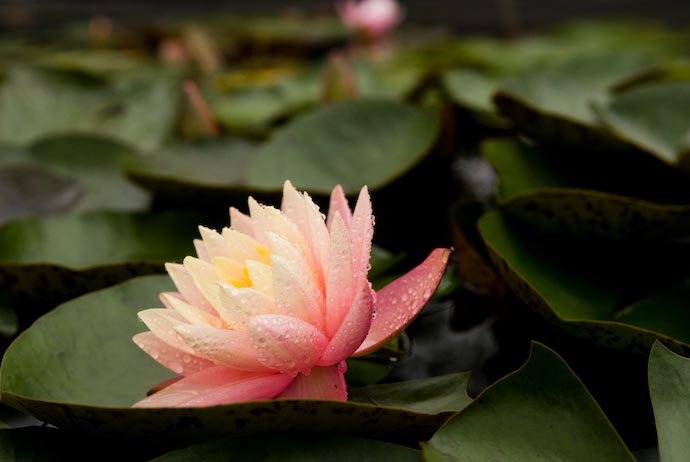
Nikon D200 + Nikkor 17-55mm f/2.8 @ 38 mm — 1/320 sec, f/4, ISO 320 — map & image data — nearby photos
Once you get close to the place, the place is easy to find because there's 300-foot tall wind turbine right at the end of the parking lot...
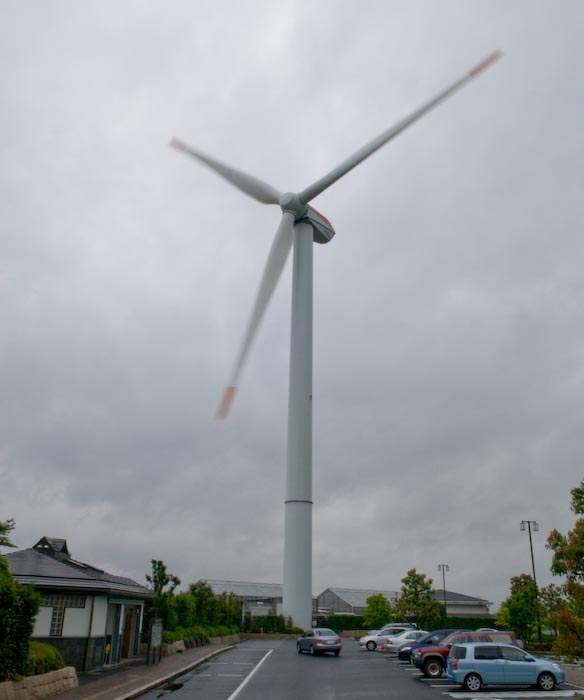
Nikon D200 + Nikkor 17-55mm f/2.8 @ 17 mm — 1/20 sec, f/22, ISO 100 — map & image data — nearby photos
Fuhrlander MD70 Wind Turbine
It's 200 feet up to the center of the prop; the blades have a 230-foot circumference. It generates electricity in winds from 3mph to 56mph (generating 1500kW in winds from 29mph on). It doesn't spin very fast... the speed is limited to about three seconds per rotation, which is what it was doing while we were there.
Without limiters, it could, of course, spin much faster, but that would be bad. If winds go over 56mph (25 m/s), the whole thing shuts down so that it doesn't self destruct like this one did (slow motion view) when its limiter broke.
Wow, that first photo is really, really striking. I love it!
Aha, some more plants and an interesting garden!
I’m intrigued by the curious little “posies” perched just above the water in the two bridge shots. I presume the plants are in containers on stems holding them just above water level. An interesting idea, though I’m not sure I like the rather twee effect.
All the waterlilies shown are in the same family (Nymphaeaceae), but belong to three different genera: true lotus is Nelumbo; what are normally called waterlilies are Nymphaea; and the dinner-plate leaf belongs to Euryale.
The rounded, stalked leaves held above the water in the first shot are the true lotus (Nelumbo nucifera), not yet flowering.
The open flowers in the third and penultimate photographs are not really lotus, but waterlilies, genus Nymphaea.
Yikes, does that mean that my “Lotus” post is mistitled? —Jeffrey
‘Kishin’ (it’s the name of the cultivar or variety, a hybrid raised only in 2004, apparently, see http://www.geocities.com/lilypage808/hybrids.htm) and is perhaps derived from Nymphaea caerulea – sometimes misleadingly called blue lotus. The water-speckled pinkish one is no doubt one of the many garden hybrid waterlilies, also Nymphaea.
The dinner-plates are yet another member of the family, Euryale ferox, which is grown more for the striking leaves than for the fairly small flowers.
Yikes, does that mean that my “Lotus” post is mistitled? —Jeffrey
Only for one pedantic botanist!
I was very interested to see the Euryale: years ago, when I was at RHS Wisley Garden, we were given a small plant of it, by a Japanese friend, but I don’t think it survived. The ‘ferox’ (‘fierce’) epithet refers to the handy spines on the leaves, leaf stalks, flower buds and fruit – defensive, no doubt, but against what, I wonder.
Great job capturing the enormous size of that windmill. I’ve always had trouble showing scale of huge objects in my photos.
I hybridized Kishin and presented it to Mizu no Mori. However, the picture is not of Nymphaea Kishin, it is of Islamorada. Kishin means ‘Joyful Heart.’
I copied the name from a picture/plaque they had just out of frame (I have it in another photo). Perhaps they categorized it? The names mean nothing to me… I just like the pretty flowers. —Jeffrey